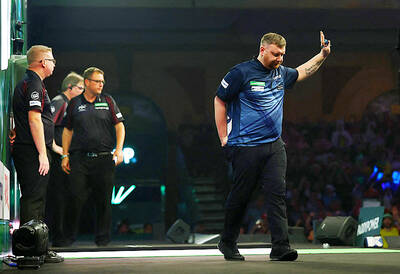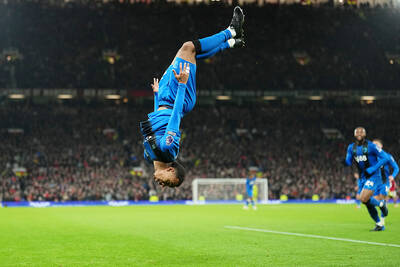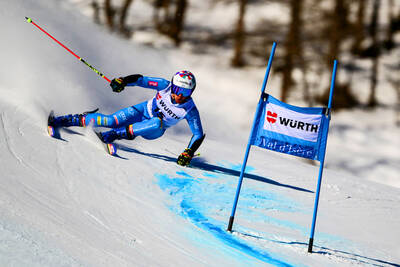Ask former All-Pro New York Giants linebacker Harry Carson what's wrong with him and he laughs. "How much time do you have?" he says. Carson, who played 13 seasons in the NFL, has a laundry list of health problems.
"Anyone who plays the game leaves with something. You learn how to deal with it," he said. "I have a disk problem that affects my sciatic nerve, back pain, numbness down my leg into my foot, spasms in my back, an atrophied posterior deltoid muscle in my right shoulder, knee pain ..."
Then there's the headaches, memory loss, and blurry vision associated with being diagnosed with post-concussion syndrome two years after he retired in 1988.
"I really don't know how many concussions I had, something like 15 to 18," he said. "We were trained to be warriors, who never wanted to sit. We played hurt. We all had that macho, John Wayne mentality. Most people get knocked around, [but] I was never unconscious. I was stunned and saw stars, and it faded to black. A lot of players don't even know they had one."
Carson, who was a Hall of Fame finalist last year, said his memory loss cost him a television broadcasting job. But he'll never forget a 1985 collision in a game against the Washington Redskins at RFK Stadium.
"The Redskins had John Riggins, who liked to use his power. He tried to run over you," Carson said. "I was a linebacker who didn't have a lot of speed. It was power vs. power. I remember hitting John solid and getting back up into the huddle. We're holding hands in the huddle. I'm the signal-caller on defense. I look over at [assistant coach] Bill Belichick and everything fades to black and comes back. He's flashing the sign -- Stack cover two -- or whatever and I can't distinguish what he's saying. So if I don't understand, my sign is to tap my helmet. He flashes again and I fade again to black and then it comes back. Then I tap my helmet."
This happens yet again.
"At this time the Redskins are already at the line of scrimmage. [Linebacker] Gary Reasons calls the play. I knew I was in trouble. Physically I was fine, neurologically I was not there. In the heat of battle, you learned to play. I stayed in the game, I probably should not have. Under those conditions, players are gonna play. It's hard for a player to come out. You suck it up and play."
Carson says he completely supports the Center for the Study of Retired Athletes. "It's extremely important, you have to have a neutral body out there to conduct credible studies, with no bias. It's tremendously helpful. We've sort of been in the dark in our own sphere. You can't often get the truth from management in the NFL."
Carson, who promised himself he never would get overweight after he retired, likes to walk the city streets. People still recognize him, even the homeless in Central Park. A thoughtful man, he still visits regularly with teammates who admire his speaking out about the dangers of concussions. But couldn't part of the depression he suffers be from not hearing the roar of the crowd and being catered to? After winning the Super Bowl, what do you do for the next 50 years?
Carson smiles. He always could take a hit.
"When I was depressed, I was still playing. It wasn't like I was not playing well. I was a captain, All-Pro, and I was depressed and I couldn't put my finger on why. I can remember going to [the Giants' medical staff] and they said, `Anything wrong?' I said, `I'm depressed and I want you to put it down.' Physically I was fine."
Carson saw a specialist in 1990, but still suffers the effects of his playing days.
"I like to think the results are due to the concussions I suffered," he said. "I have good days where I'm up and witty and other days where I'm very sluggish. I learned to deal with it. It's a trade-off."
But Carson would not trade in his Super Bowl ring or blame anyone for his medical problems.
"What you do is so special you pay the price. I can't think of many players that would say it wasn't worth it," he said. "It's not the trainers' or the coaches' fault ... concussions are the bad guy."
Carson said his playing days (1976-1988) were still the dark ages of understanding concussions. "They'd ask you what day it was," he said. "That's no true measure of what damage had been done.
"For the most part, it was my decision to go back in the game. It was a different era, there was not a whole lot of research. I don't think anybody knew how serious it was at the time.
"When Steve Young and Troy Aikman, high-profile players, got dinged, then people started to take notice. I can't talk about brain damage down the road."
Carson attended the funeral of Pittsburgh Hall of Fame center Mike Webster last September. Webster was diagnosed in 1999 with brain damage caused by multiple concussions, which set off a myriad of problems leading to his death from congestive heart failure.
"What can be done? Nothing," Carson said. "It's the nature of the game. It's a contact sport. How is technology going to stop that?
"It could be the sudden stopping of the body and the brain continues to go. Especially around the head. I don't care how much equipment you have.
"It's frustrating. But you see more and more players keeling over, and not of Alzheimer's. You can't really worry about it. The best thing you can do is live."

By the time Cameron Menzies finally left the arena on Monday, the blood gushing from the gash on his right hand had trickled down his wrist, part of his forearm and — somehow — up to his face. Smeared in crimson and regret, and already mouthing sheepish apologies to the crowd, he disappeared down the steps, pursued by a stern-looking Matt Porter, the chief executive of Professional Darts Corp (PDC). The physical scars from Menzies’ encounter with the Alexandra Palace drinks table after his 3-2 defeat against Charlie Manby at the Darts World Championship would be gone within a few weeks.

Manchester United on Monday blew the lead three times to miss out on moving up to fifth in the Premier League as AFC Bournemouth would not be beaten in a thrilling 4-4 draw at Old Trafford. United have lost just once in their past 10 games, but Ruben Amorim would be frustrated as more points at home were frittered away despite arguably the best attacking display of his reign in charge. Amad Diallo and Casemiro gave the hosts a halftime lead either side of Antoine Semenyo’s equalizer. Two Bournemouth goals from Evanilson and Marcus Tavernier in seven minutes at the start of the

LOW-GOAL SHOOT-OUT: Of the nine penalties in the shoot-out, only three went in, with Flamengo’s Samuel Lino, and Vitinha and Nuno Mendes of PSG netting Matvei Safonov on Wednesday made four straight penalty saves in a penalty shoot-out to help Paris Saint-Germain beat Flamengo in the Intercontinental Cup final and win a sixth trophy of the year. The Russian goalkeeper was thrown in the air by his teammates after his exploits in the shoot-out, which was won 2-1 by PSG after a 1-1 draw after extra-time. It completed a trophy-laden 12 months for the French team, who had already won the Trophee des Champions, Ligue 1, the Coupe de France, the UEFA Champions League and the UEFA Super Cup — also on penalties against Tottenham Hotspur in

Italian Luca de Aliprandini described Saturday’s World Cup giant slalom at Val d’Isere as the hardest race of his life, coming two days after his Swiss partner Michelle Gisin suffered a heavy fall in training which required neck surgery. De Aliprandini finished 26th in the men’s event won by Loic Meillard, but the result paled into insignificance with two-time Olympic ski champion Gisin in hospital with injuries to her wrist, knee and cervical spine (neck). “It was Michelle’s wish that I race here. I couldn’t say no to her, but it was the toughest race of my entire life,” an emotional De